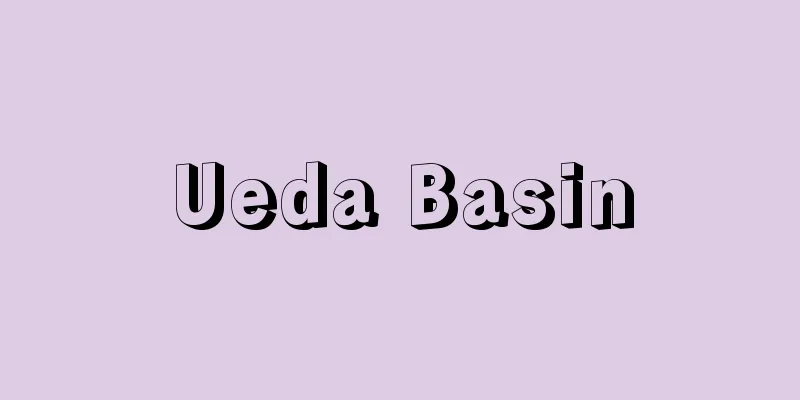Stone wall

|
A structure made by piling up naturally occurring boulders or stones cut and polished. There are retaining walls for holding back soil and stone walls for fencing. There are construction methods such as wooden sheet piles and steel sheet piles to prevent landslides, soil flow, and collapses that tend to occur on steep slopes and cliffs, but stone walls are a general term for structures made by piling up stone blocks in stages to withstand lateral soil pressure and act as retaining walls. Since ancient times, they have been widely used in both the East and the West as foundations (stone ramparts) for castles and towers, and are also used for mountain roads, riverbanks, and housing development on sloping land. Rice farming is widespread throughout Japan, and stone-built retaining walls can be seen in many rice paddies in mountainous areas. [Kiyoshi Kanata] materialHard stones such as granite and andesite are often used for stone retaining walls. The size of the blocks varies widely, but for example, the stone walls of Osaka Castle are made of huge granite boulders transported by sea on rafts and stone boats (ships specially designed for transporting stone) from the Seto Inland Sea coast. Transporting the huge stones on land was often done by hand, such as by placing them on a shurā (a wooden boat), but on one occasion, the stone-pulling was carried out in a festival-like ruckus, with elaborate attire, a lumberjack leading the way, and a large crowd of spectators joining in to add some vigor. The stone walls of Edo Castle, which is now the Imperial Palace, are made of a large amount of Komatsu stone (andesite) mined near Odawara City, Kanagawa Prefecture. The stone wall construction techniques and wall structure of these castles are unique to Japan. [Kiyoshi Kanata] Stone masonryNatural stone masonry (kuzurezumi), which is not limited by the shape or size of the stones used, is the oldest construction method for stone walls, and this structure has been passed down to the present day. There is also boulder masonry, which uses the same natural stones, and a commonly seen type of masonry is kenchiishi masonry. Kenchiishi masonry methods include V-shaped valley masonry, nuno masonry which emphasizes horizontal lines, and a unique type called hexagonal hexagonal tortoiseshell masonry. Other types include masonry that uses irregularly shaped miscellaneous stones, and masonry where the stones are laid out with the wall composition in mind in advance. [Kiyoshi Kanata] Stone wallStone walls do not require consideration of earth pressure and can be designed quite freely. Soft stones such as sandstone and tuff are often used, and because they are easy to process, stone walls with carvings and elaborate finishing can be seen. Stone walls are called mortared or dry masonry depending on whether they have mortar in the joints. Stone masonry is the most commonly used type of stone, and over the years it creates a serene, three-dimensional landscape. [Kiyoshi Kanata] "Ryo Iijima et al., "Primary Colors: Japanese Stones - Their Origins and Uses" (1978, Yamatoya Publishing) ©Shogakukan "> Shape of the Ganchi Stone ©Shogakukan "> Main types of masonry ©Shogakukan "> Cross section of a stone wall (dry stone and kneaded stone) Source: Shogakukan Encyclopedia Nipponica About Encyclopedia Nipponica Information | Legend |
|
天然に産出する玉石(たまいし)、またはそれを切断、研磨加工した石材を積み上げて構成した工作物のこと。土留めを目的とする擁壁(ようへき)、囲障を目的とする石塀(いしべい)などがある。急斜面や崖(がけ)など高低差のある土地で発生しやすい地すべりや土砂の流動、崩壊を防止する手段として、木製矢板を用いた支保工や鋼鉄製シートパイルの打設などの工法があるが、石垣は、石のブロックを段々に積み上げて側方からの土圧に耐えさせ、山留めの役目をさせるものを総称する。古来、城郭や櫓(やぐら)などの基礎工(石塁)としても洋の東西を問わず広く用いられ、また、山道や河川の護岸、傾斜地における宅地造成にも利用される。日本では稲作農業が全国的に普及しており、山間地の水田には石積みされた擁壁が多く見受けられる。 [金多 潔] 材料花崗岩(かこうがん)や安山岩など硬度の高い石材は擁壁用の石垣に多く用いられる。石塊の大きさは大小さまざまであるが、たとえば大坂城の石塁には、瀬戸内海沿岸から筏船(いかだぶね)や石船(石材運搬専用船)で海上輸送によって運ばれてきた巨大な花崗岩の大石が使われている。陸上での巨石運搬は、石を修羅(しゅら)に乗せて運ぶなど、人力によることが多かったが、あるときは装いをこらし、木遣(きやり)の音頭をとり、大ぜいの見物を交えて威勢をつけ、お祭りのような騒ぎで石引きを行ったといわれている。現在、皇居になっている江戸城の石塁には、神奈川県小田原市近郊から産出する小松石(安山岩)が多量に用いられている。これらの城郭の石塁の技術と壁面の構成は日本独得のものである。 [金多 潔] 石積み石垣では積み石の形や大小にとらわれない自然石積み(くずれ積み)がもっとも古い工法であり、その構成は現代にも引き継がれている。また、同じ自然石でも玉石積みがあり、よくみかける石積みとして間知石(けんちいし)積みがある。間知石積みの積み方は、V字形の谷積みと水平の線を強調した布(ぬの)積み、そして特殊なものに六角形の亀甲(きっこう)積みがある。ほかに不定形な雑石を用いた石積みや、あらかじめ壁面構成を考えて石の割付けをした石積みなどがある。 [金多 潔] 石塀石塀については土圧を考えないでもよく、かなり自由なデザインも可能である。砂岩や凝灰岩などの軟石を使う場合も多く、その加工が容易なことから彫刻を施したものや、仕上げ面の加工に手の込んだ石塀が見受けられる。石垣は、目地モルタルの有無によって練(ねり)積み、空(から)積みなどといわれる。石の利用上、石積みはもっとも多く使われ、長い年月を経ると落ち着きのある立体的景観を生み出す。 [金多 潔] 『飯島亮他著『原色 日本の石――産地と利用』(1978・大和屋出版)』 ©Shogakukan"> 間知石の形状 ©Shogakukan"> 石積みのおもな種類 ©Shogakukan"> 石塀の断面(空積みと練積み) 出典 小学館 日本大百科全書(ニッポニカ)日本大百科全書(ニッポニカ)について 情報 | 凡例 |
>>: Sadakiyo Ishitani - Ishigai Sadakiyo
Recommend
Prussian Reformation (English: Reformen in Preußen German)
This refers to a series of reforms that took plac...
Agano River
It is a river that runs through the center of Nii...
《Astrée》(English spelling) Astree
…He sided with the Catholics during the Wars of R...
chinaberry (tree) (English spelling) chinaberry
…It is also often planted as a garden tree or roa...
Anapaistos
… [Metre, or poetic foot] A step (also called a f...
Third generation - Sanze
〘Noun〙① A Buddhist term. A general term for the pr...
editorial page
...In contrast, in Japan, it is said that editori...
Zhang Zǎo (English name)
A Chinese painter from the mid-Tang Dynasty. Dates...
Indian Studies - Indian Studies (English spelling)
A general term for academic studies that study Ind...
Toshijima
An island at the mouth of Ise Bay in the central-...
chigoe
…Other fleas that penetrate the tissues of their ...
Calligraphy - Calligraphy
A formal code of etiquette that stipulates the fo...
Hadith - Hadith (English spelling)
Generally it means "story" or "rep...
Indian Sculpture
...the general term for art that has been produce...
Oats - Oats
Also known as oats or oats. A one- to two-year-old...









